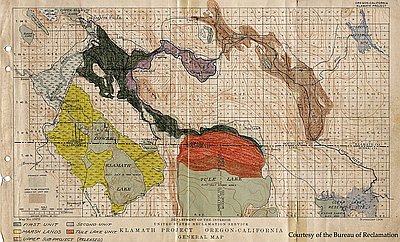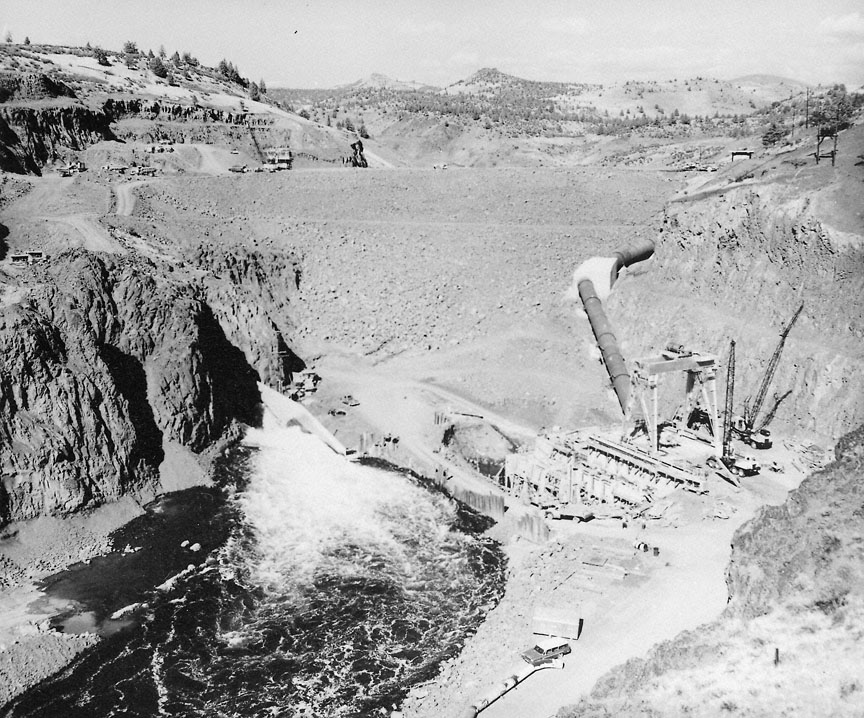- Catalog No. —
- CN 001223
- Date —
- 1961
- Era —
- 1950-1980 (New Economy, Civil Rights, and Environmentalism)
- Themes —
- Environment and Natural Resources, Government, Law, and Politics, Trade, Business, Industry, and the Economy
- Credits —
- Oregon Historical Society
- Regions —
- Southwest
- Author —
- Oregon Journal Collection
Iron Gate Dam
Iron Gate Dam, pictured here under construction in 1961, is one of seven dams on the Klamath River used by the Department of Interior’s Klamath Reclamation Project, which provides irrigation water to approximately 240,000 acres of land used to grow alfalfa, cereal grains, potatoes, and other crops. In 2001, the Bureau of Reclamation (BOR) estimated that low precipitation and snowpack in 2000 would adversely affect the Klamath River and Upper Klamath Lake and decrease water levels below Iron Gate Dam by the spring growing season. The National Marine Fisheries Service (NMFS) issued a Biological Opinion in March 2001 concluding that the water flow levels from Iron Gate Dam would jeopardize the endangered coho salmon. Likewise, the U.S. Fish and Wildlife Service (USFWS) concluded that estimated water levels for Upper Klamath Lake were insufficient to sustain the endangered Lost River and shortnose suckers.
On April 6, 2001, the BOR mailed notice to Klamath Project water users below Upper Klamath Lake, who received water primarily from the lake, that Project water would not be available. If water were provided, the BOR would violate the Endangered Species Act, which requires federal agencies to ensure that their actions do not jeopardize endangered or threatened species. Releasing water for irrigation would also have decreased water levels in the lake and downstream below Iron Gate Dam, endangering the fish populations. About 1,200 farmers, or 85 percent of the normally irrigated Project lands, were denied Project water. In July 2001, the BOR released 40,000 acre feet from Upper Klamath Lake for irrigation in response to overwhelming protest. For many farmers, however, it was too late to save their crops.
Written by Robert Donnelly, © Oregon Historical Society, 2003.
Related Historical Records
-
Klamath Project Map, 1908
At the end of the nineteenth century, the U.S. Government had invested in numerous projects to improve the infrastructure of America. Congress had passed appropriations to fund roads, …

-
Klamath Project Canal & Tunnel
Construction of the Klamath Reclamation Project, a federally constructed and managed irrigation system, began in 1906 with the building of the Main Canal, or “A” Canal, and tunnel. …

